On 20 August 1991, Estonia declared formal independence during the Soviet military coup attempt in Moscow, reconstituting the pre-1940 state.
In the evening of 20 August 1991, Estonian politicians declared the nation’s independence – even as Soviet tanks were rolling through the countryside to quell the independence movement and the Soviet paratroopers were taking charge of the Tallinn TV Tower, preparing to cut off communication channels.
The fate of Estonia was on peril. Yet, most Estonian politicians and the greater part of the public showed great resolve in the face of this danger.
Estonian volunteers surrounded the TV Tower and wouldn’t let themselves to be intimidated by the Soviet troops. Members of the Estonian Defence League – the unified paramilitary armed forces of Estonia – were ready to protect the strategically important buildings, such as the parliament at Toompea and the Estonian Public Broadcasting facilities in Gonsiori street.
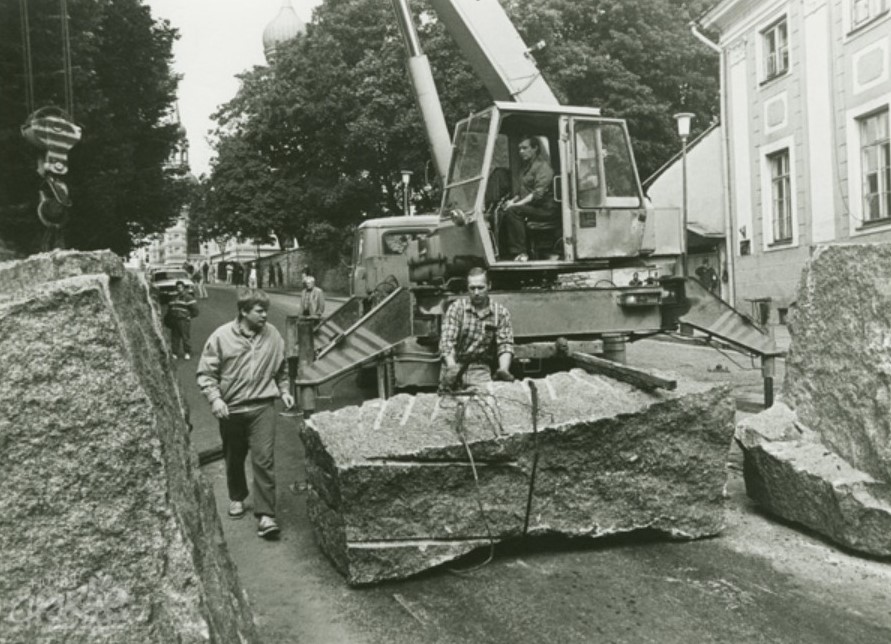
Luckily for Estonia, the attempted coup d’état in Moscow failed and the more liberal forces, led by the leader of the Russian Soviet Federative Socialist Republic, Boris Yeltsin, prevailed – thus starting the disintegration of the Soviet Union. Estonia was free again.
The first country to diplomatically recognise Estonia’s reclaimed independence was Iceland, on 22 August. The Soviet Union recognised the independence of Estonia on 6 September 1991.
This is the brief look back at the history of Estonia’s independence movement during the late 1980s, culminating with the events of 20 August 1991.
The crisis in the Soviet Union opens a window of opportunity for Estonia
By the mid-1980s, the Soviet Union’s economy was in a critical situation, largely caused by a lack of technological development compared with the West, the inefficient socialist planned economy based on extensive production and preferred development of military industries. In the arms race with its main enemy, the US, the Soviet Union turned out to be the loser, having exhausted its potential.
The Soviet export of oil and gas suffered seriously after fuel prices fell on the world market. At the same time, the Soviet Union increasingly depended on imported grain, which was unable to meet the demands of the domestic market. The increasing lack of food products and basic necessities such as footwear and clothes, plus escalating prices, caused bitter resentment among the population.

The Soviet foreign policy had reached a dead end as well, as it had been expansionist for decades, trying to extend Soviet power throughout the world. The war against Afghanistan started in 1979 and proved much more complicated than initially estimated. This brought about foreign policy complications and further strained the country’s economy.
The Soviet leadership did not publicly acknowledge the crisis. Therefore, many people, including most Estonians, were initially cautious of Mikhail Gorbachev, the new leader of the Soviet Union, who started his innovative policies in 1985. The key words glasnost and perestroika (openness and reconstruction) seemed like empty slogans, and it was not clear what kind of reforms and changes the new Soviet leader was actually pursuing.
In 1986, the situation began to change. On 26 April 1986, a nuclear reactor accident occurred at the Chernobyl nuclear power plant in Ukraine, which became the test of the new policy of openness. The attempts of the central powers to suppress or minimise information about the disaster in a densely populated area caused indignation in the population.
The first signs of radical changes in the society emerged in Estonia in spring 1987, when the Soviet plans to establish phosphorite mines in northern Estonia were revealed. This unleashed an extensive protest campaign, the ‘phosphorite war’. This also marked the kick-off of the process of regaining Estonian independence, as the environmental issues were soon supplemented by political topics.
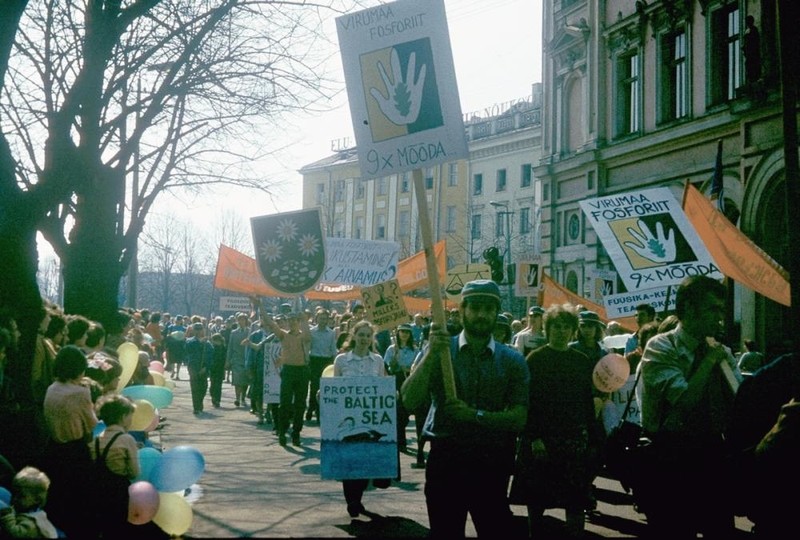
In August 1987, the Estonian Group on Publication of the Molotov-Ribbentrop Pact was founded. The group organised a mass meeting in Hirvepark in Tallinn the same month, where people demanded that the secret protocol of the 1939 pact be made public.
The meeting was not forcefully disbanded, as would have happened before, which showed that civil rights had expanded and the regime had softened – the authorities even granted permission to hold the demonstration.
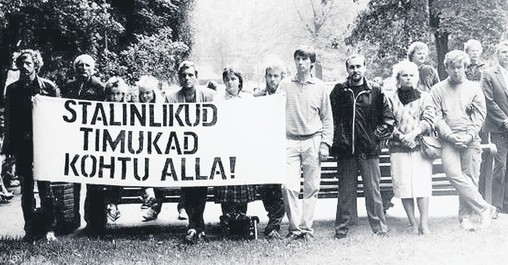
Simultaneously with the increasing political freedom in society, Estonians started demanding economic reforms and the right to make their own decisions.
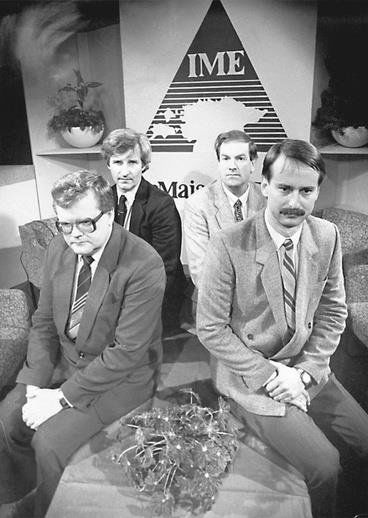
In autumn 1987, the idea of self-managing Estonia (Estonian acronym IME) was enthusiastically discussed in the Estonian society. The plan was to make Estonia economically independent (adopt a market economy, establish Estonia’s own currency and tax system).
Although formally it was no more than a suggestion to grant the republic greater decision-making power to better manage the economy, many people nevertheless hoped Estonia would gradually manage to separate itself from the Soviet Union, or at least achieve greater autonomy. The proposal failed to get a positive reply from Moscow, although the Soviet Union now allowed private enterprise.
The Estonian society awakens
The Estonian society became politically active in 1988. A joint plenum of the creative unions (writers, artists, architects and theatre and film people), which focused on Estonian national culture and the threat of intensifying Russification, expressed dissatisfaction with the activity of the Soviet Estonian leadership.
In mid-April, the Estonian Popular Front in Support of Perestroika was founded. This moderate, but clearly innovative movement wanted to make the Soviet Union more democratic and demanded political and economic autonomy for Estonia within the Soviet Union. The moderate aims of the Popular Front were enthusiastically supported by the Estonian population and it quickly became a powerful mass organisation.

The early summer of the same year witnessed a series of concerts and joint singing, soon to turn into a large-scale popular movement, and later called the Singing Revolution.
Besides the moderate course, a more radical national movement emerged in 1988, which was clearly directed at restoring Estonia’s independence. The Estonian Heritage Society, established at the end of 1987, used totally anti-Soviet rhetoric. In August 1988, the first Estonian political party was founded: the Estonian National Independence Party (Estonian abbreviation ERSP).
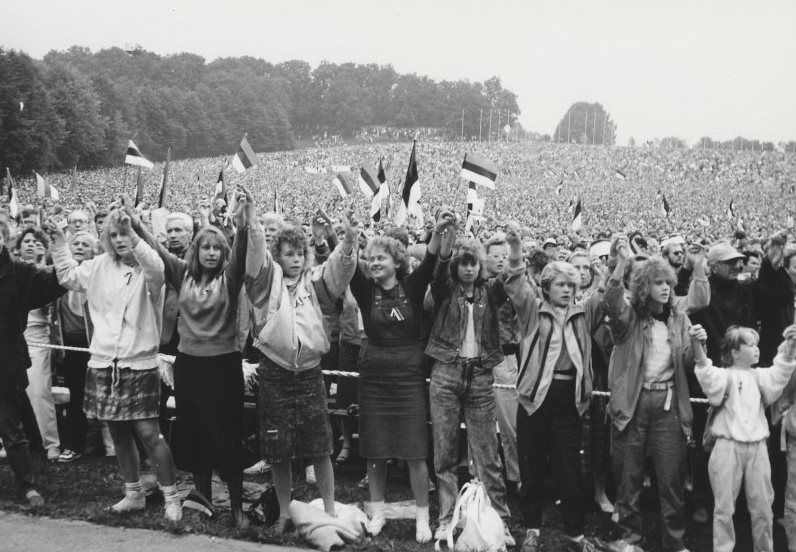
In summer 1988, under public pressure and in order to avoid the popular movement getting out of control, the Soviet leader Mikhail Gorbachev replaced Karl Vaino, the conservative head of the Estonian Communist Party, who was extremely unpopular among the Estonians.
The new leadership under Vaino Väljas, perceiving the support and pressure of the mass popular movement, began making increasingly radical decisions in the interests of Estonia and defending them in the Moscow corridors of power.
On 20 October, the Supreme Soviet of Estonia (then the legislative assembly in the country, made up entirely of the local Communist Party members) recognised the blue-black-white tricolour as the Estonian national flag (however, the Soviet-imposed red flag remained the official state flag).
On 16 November, the Estonian Supreme Soviet passed the Declaration of Sovereignty, which said the laws passed by the assembly had supremacy over those passed in Moscow. The document also declared the basis of the relations between the central authorities of the Soviet Union and Estonia must be an agreement that would establish the rights and duties of both sides, achieved by negotiations. Moscow declared the declaration null and void, but was unable to halt the process of restoring independence.
In opposition to the Estonian national mass movement, forces mainly representing some of the local Russian-speaking population began rallying in 1988, regarding the Estonians’ aspirations for freedom to be illegal.
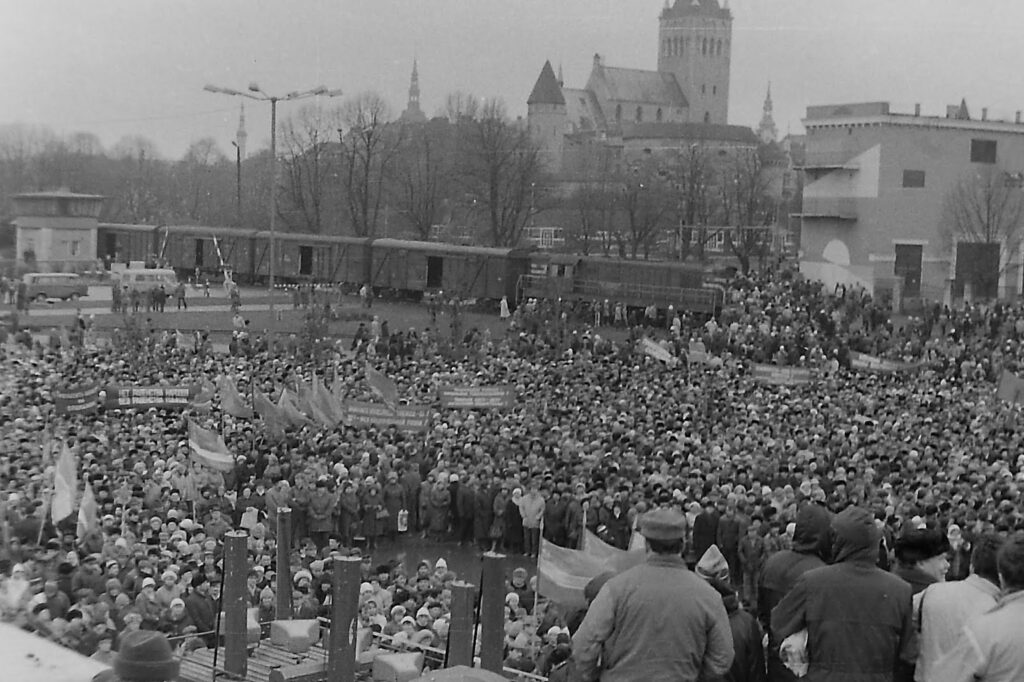
In the summer, the heads of the huge Soviet factories in Estonia formed the International Movement of Soviet Estonian Workers and, in the autumn, the Council of Working Collectives, both with the aim of defending the united and inseparable Soviet Union.
The movements protested against the Language Act passed in January 1989, which declared the Estonian language to be the only official language in the territory of the Estonian Soviet Socialist Republic. They were also against replacing the Soviet-imposed red flag with the Estonian blue-black-white national flag on the tower of Tall Hermann, a symbol of local power.
Unstoppable independence movement
A special mass undertaking by the independence-seeking forces in the Baltic countries was the Baltic Chain, which attracted keen interest in the foreign press. On 23 August 1989, the 50th anniversary of the signing of the Molotov-Ribbentrop Pact, about two million people formed a living chain from Tallinn via Riga to Vilnius, thus eloquently demonstrating their wish for independence.
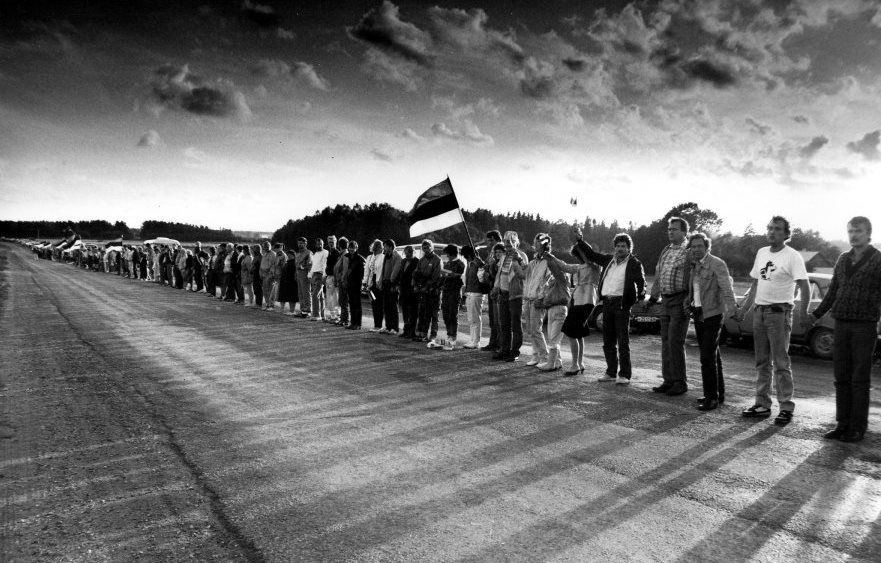
By 1989, two trends had emerged within the Estonian independence movement.
In February 1989, people united around the Estonian National Independence Party, led by Tunne Kelam, and the Heritage Society started the movement of Estonian citizens’ committees. The main aim was to restore the Republic of Estonia on the basis of legal continuity – based on the free and independent state of 1918-1940.
In 1990, the Estonian citizens who were registered by the committees elected the Estonian Congress. On 11 March 1990, the Congress approved a manifesto that announced the wish of the Estonian people to restore the Republic of Estonia on the basis of legal continuity and the Tartu Peace Treaty (1920).
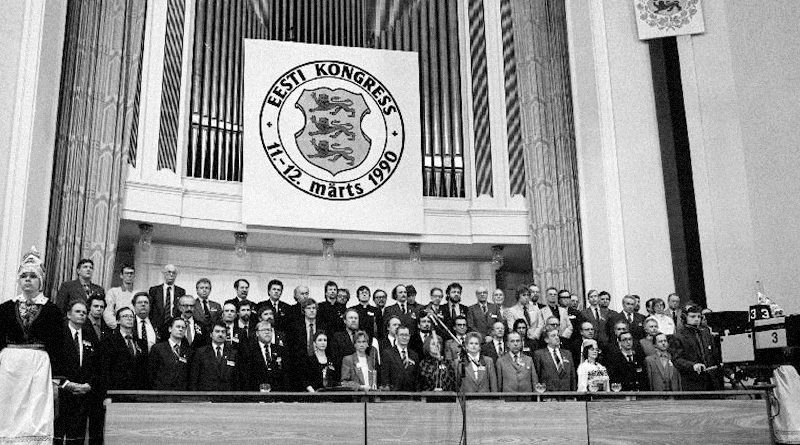
The other trend was represented by the Popular Front, led by Edgar Savisaar, which became the strongest political power in Estonia at a time when the Communist Party was falling apart and losing its monopoly on power.
In March 1989, the Popular Front was successful in the election of the Congress of Representatives of the Soviet Union (based in Moscow, the Congress had delegates from each of the 15 Soviet states) – the first multi-party candidate election.
As a result of the first multi-party candidate general election in Estonia since the Soviet occupation, in March 1990, the Popular Front had the largest number of representatives in the Supreme Soviet of Soviet Estonia (and Edgar Savisaar was appointed the Chairman of the Council of Ministers).
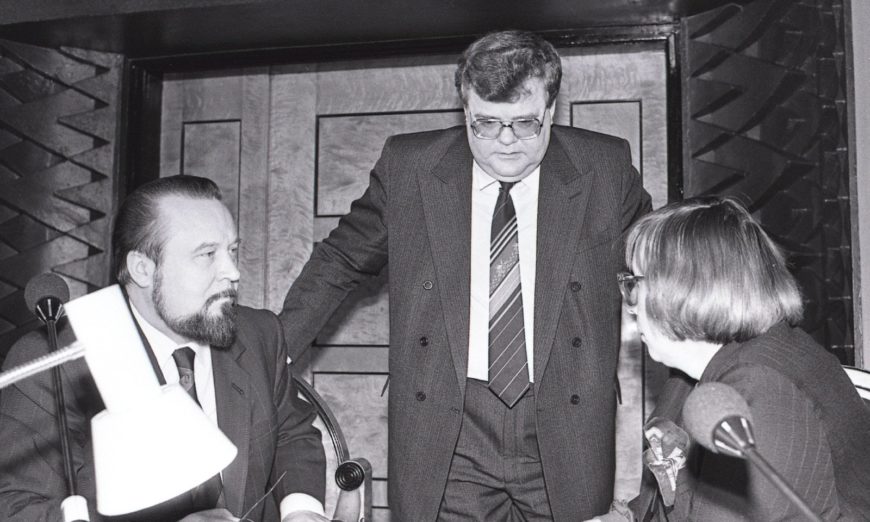
By that time, the Popular Front had already abandoned the idea of a union agreement with the Soviet Union and supported full independence for Estonia – not on the basis of legal continuity, but relying on the principle of declaring a new Estonian state, the “third republic”.
Frightening times
The two trends came together in spring 1990, when the Estonian Supreme Soviet declared the authority of the Soviet Union in Estonia illegal. A transition period was announced, which in cooperation with the Estonian Congress, would lead to the restoration of the Republic of Estonia.
On 8 May 1990, the country’s name, the Estonian Soviet Socialist Republic, was abolished and replaced by the Republic of Estonia. On 1 November, Estonia’s own border guard was refounded and 27 border checkpoints were established. However, independence had not yet been achieved.
The Soviet Union still considered Estonia and the other Baltic republics to be Union republics, subordinated to Moscow – and was prepared to use extreme force to maintain its power, as seen in the violent events in January 1991 in Vilnius and Riga. In both capitals, Soviet special troops tried to seize the media centres controlled by the Lithuanian and Latvian national forces, respectively, and dozens of people were killed.
Estonia was spared violent deaths, but only just. On 19 May 1991, a group of members of the OMON – a special militia unit of the Soviet Union – attacked the border checkpoint in Luhamaa, on the Estonia-Russia border, destroying its furnishing. On 8 June, they attacked the same installation again, this time also destroying the bus used by the Estonian border control.

On 14 June, the OMON attacked even more viciously the border checkpoint in Ikla, on the Estonia-Latvia border. This time, they opened fire on the checkpoint, threw incendiary bombs to set fire to the border guards’ living quarters and threw an explosive into the main building. Luckily, no Estonian border guards was killed.
An important role in solidarity was the support of the central Soviet Union republic, the Russian Soviet Federal Socialist Republic, for the Baltic states. Russia itself, led by Boris Yeltsin, declared its sovereignty on 12 June 1990 and thereafter limited the application of Soviet laws, in particular the laws concerning finance and the economy, on Russian territory.
On 13 January 1991, Yeltsin arrived in Tallinn, and with the leaders of the Baltic countries he signed a joint declaration, recognising one another’s sovereignty.

But the Soviet leader, Mikhail Gorbachev, tried to keep the Baltic countries in the Soviet Union. Moscow planned a referendum to preserve the Soviet Union. However, the Estonian authorities refused to take part.
Instead, a referendum on the country’s independence was organised in Estonia on 3 March 1991 – 77.8% of the participants voted in favour of the Estonian independence.
Soviet coup d’état attempt creates a window of opportunity
On 19 August 1991, eight Soviet hardliners, including the head of the KGB, made an attempt to take control of the country from Mikhail Gorbachev, who was on holiday in his dacha in Crimea. Gorbachev was placed under house arrest, the hardliners announced a state of emergency and tanks were rolled on the streets of Moscow.
The putschists in Moscow also sent more Soviet troops and armoured vehicles to Estonia.

The Estonian authorities realised that this was a “now or never moment” for the country – however risky, the decided to act swiftly and proclaim independence from the Soviet Union. Under the pressure, the different political powers in Estonia managed to reach consensus – on the evening of 19 August, the Supreme Soviet of the Republic of Estonia and the delegation of the Estonian Committee (the executive organ of the Estonian Congress) began talks about declaring Estonian independence.
The main issue of dispute was the choice between two options – whether to declare a new independent Republic of Estonia or, on the basis of legal continuity, restore the previous Republic of Estonia that was declared in 1918 and occupied by the Soviet Union in 1940.
At 23.02 on 20 August, the Supreme Soviet of the Republic of Estonia approved the declaration of Estonian National Independence, coordinated with the Estonian Committee – after lengthy discussions, the version of legal continuity was chosen. In addition, a Constitutional Assembly was formed to work out the draft bill for a new constitution of the Republic of Estonia.
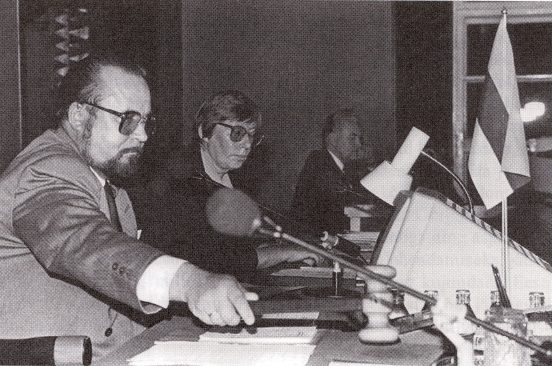
Another nerve-racking day followed. On the morning of 21 August, Soviet troops occupied the Tallinn TV Tower and transmission was temporarily disrupted. However, the national radio remained free and continued to broadcast news about events in Estonia.
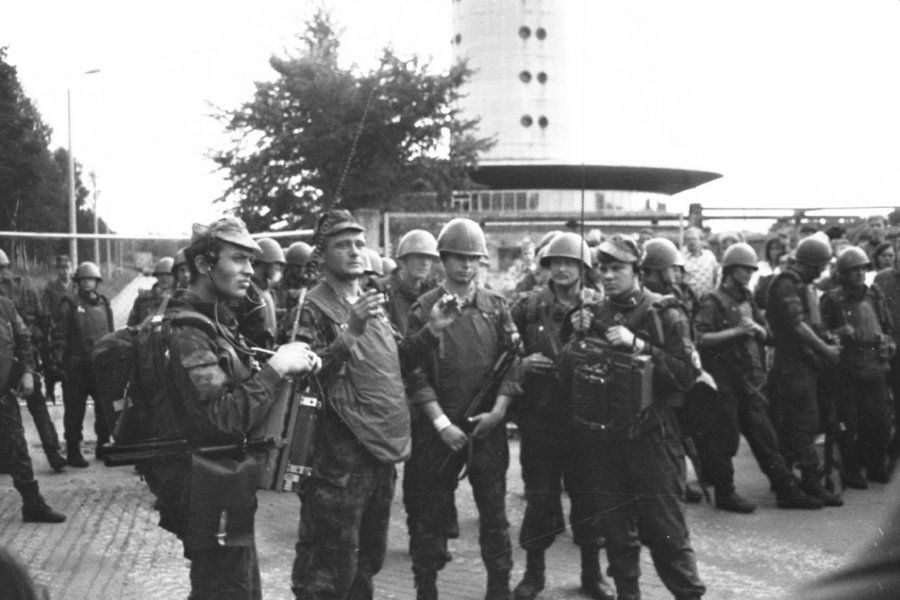
But by the afternoon of 21 August it was clear that the coup d’état in Moscow had failed – to a great degree thanks to the resolve of Boris Yeltsin – and after talks with the Estonian leadership, Soviet troops abandoned the TV Tower and left Estonia.
On 22 August, Iceland became the first country to establish diplomatic relations with the Republic of Estonia, followed by Lithuania, Latvia and Russia. France was the first major Western power to recognise the Estonian independence, on 30 August.
On 6 September, the Soviet Union officially recognised the Estonian independence and on 17 September, Estonia was admitted to the United Nations. Estonia was free again.
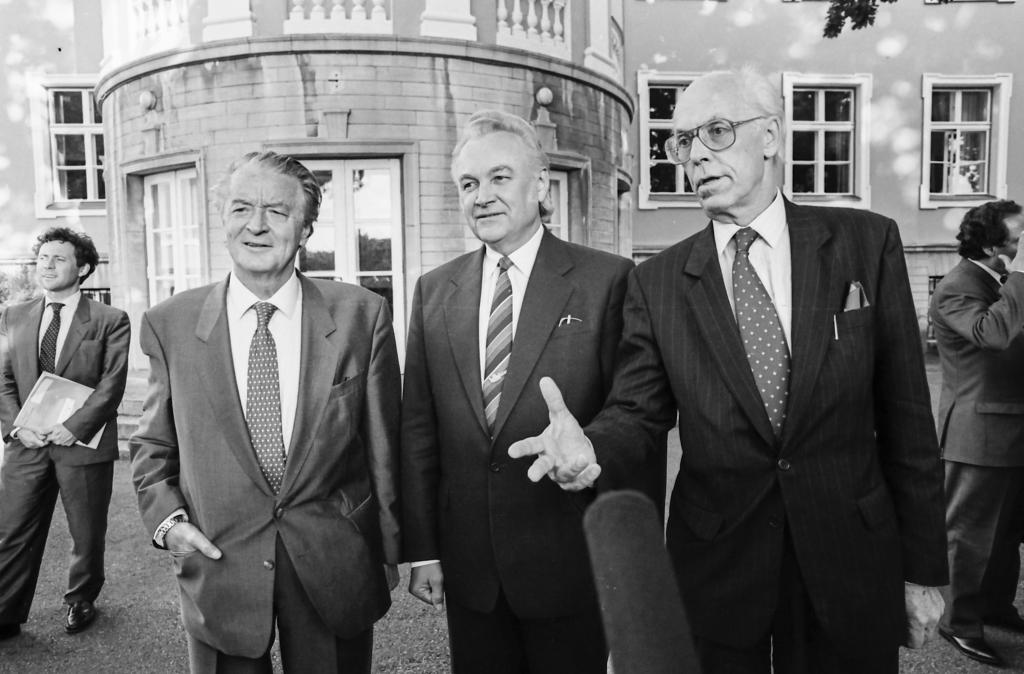
Responding to the failure of the August coup d’état, all Soviet Union republics achieved independence. The Soviet Union essentially ceased to exist and on 26 December 1991, it was officially dissolved.
Read also: A memorable dinner: the seven days in August that decided the fate of Estonia
Text by Einar Vära/Estonica and Estonian World. * This is the amended and enhanced version of the article originally published on 20 August 2014.

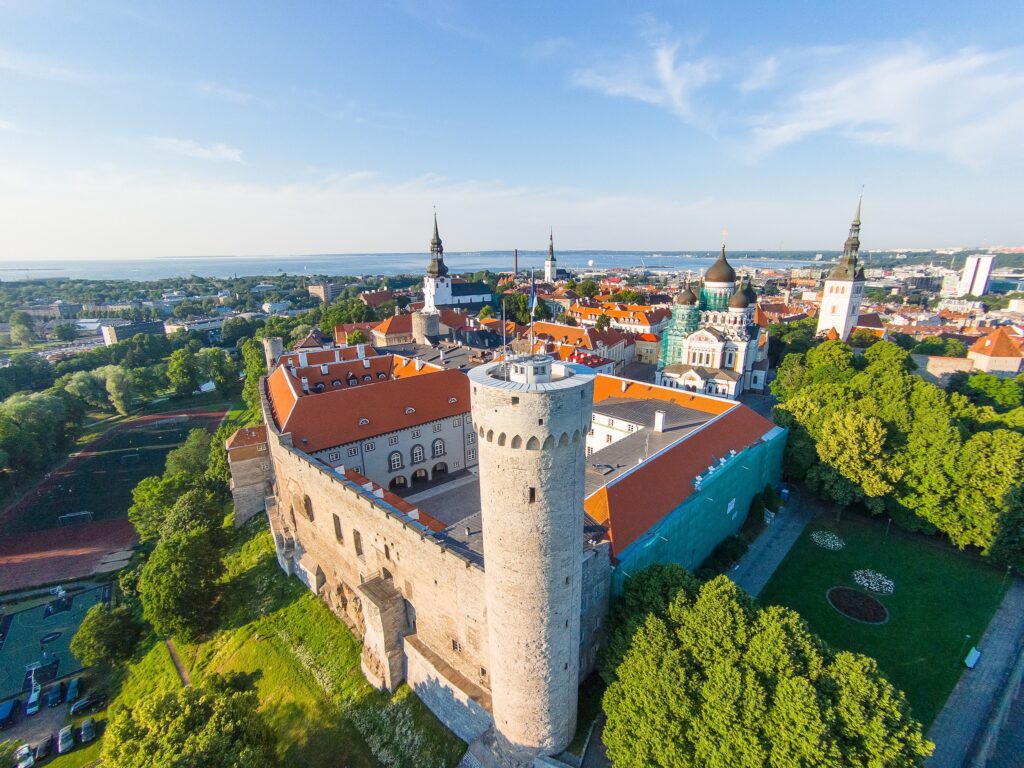
Excellent article. Living in Australia, my Estonian heritage is important to me, and my children and grandchildren. Happy Independence Day and thoughts of the many who fought so hard to obtain it. May it stay so forever.
My wife tells me that the TV tower was kept broadcasting due to the people inside sealing off the access to the studios (doors designed to protect such an assault) and the Soviet troops gave up and discovered a bar in the building to declare war on instead. Is this the case?
Jamming Soviet transmissions in August 1991
On the top floor of the Toompea Castle, a radio communications center
started operations on July 10, 1991, in a room next to the attic. This made it possible to communicate with foreign countries, international organizations (e.g., UN), the White House in Moscow (Yeltsin’s headquarters), all the power structures under the jurisdiction of the government of Estonia, counties of Estonia, governments of Latvia and Lithuania, as well as to monitor the radio communications of the Soviet Armed Forces, Intermovement, KGB, air traffic, ship traffic, Soviet Border Guard, etc. The technology also facilitated the establishment of direct contact immediately with the opposing side. Under the roof of the
castle, we established an entire field of antennas in order to use different radio frequencies while none of the antennas was visible from the outside.
Most complicated was maintenance of communications with the counties.
The only possibility was to involve radio amateurs, because they existed
in all of the counties. A large number of completely trustworthy radio amateurs
was involved at that time. Naturally, they did not know where the information
that they collected was going, and who was actually giving them instructions
and organizing their activity. The information from the radio amateurs was not
sent directly to Toompea Castle, but to specific amateur radio stations in
Tallinn that directed the work of radio amateurs. At the Castle, we just had to
listen in on these communications. It was agreed that the veil of secrecy would
not be raised on the radio station at the Castle, because our goal was to
operate only as a last resort.
The radio communications jamming group was at another location and received
direct instructions from the Toompea communications center. A total of 60
people worked under my supervision to guarantee communications for the
government of Estonia.
When armoured personnel carriers from Pskov, Russia, arrived in
Tallinn on the evening of August 19, the soldiers were relatively tired, but
a radio check was the first thing they did. This procedure gave
us their working frequencies and backup frequencies. These armoured
fighting vehicles had four built-in channels as well as a fifth radio
station, and we knew all the frequencies.
The most important moment was the assault on the Tallinn TV Tower. Some
men from the infantry went up into the tower at four or five o`clock in the
morning. At the same time, the armoured vehicle group took up positions around
the tower. After that, the unit commander communicated with the commander
of the 76th Division at Tondi and reported that they were in place. He
didn’t say that they were at the TV Tower, but it was clear to us because
we were in direct contact with the Tallinn TV Tower all the time.
Thereafter, the division commander ordered them to report on the situation. In
the military, this is done with the help of an ordinary code table – for
instance, two-three numbers stand for some phrase. From the moment they started to read the numbers, we started jamming. The assailants tried all the
reserve frequencies. However, they were confronted everywhere by our
jammers. They did not succeed in reporting on the situation and the
commander of the entire operation could not give the order to attack. We were
not ready for this. We improvised, but everything turned out perfectly. We
interrupted their communications for three and a half hours. No information
from the TV Tower reached the high command. It was rumoured that they even
used a messenger.
Later, when we reviewed the recordings, a surprising fact became clear.
We even had been able to jam the communications between the different
Soviet army units located at the Tallinn TV Tower in Pirita!
The communications center was in direct contact with Moscow, however the
White House (Russian Parliament building) did not know that we were
representatives of the government of Estonian.
http://estonianelectronicwarfare.blogspot.com.ee/2015/09/1.html
Good article, but isn’t one detail wrong? Paratroopers were not used at the Tallinn TV tower, I think. They were ordinary soldiers on the ground, weren’t they?
Matthias:
No those were specially trained Para Troop Soldiers. Soviet Paratroopers were well trained and equipped. Towards the end of the”Thaw” period of Soviet history it was obvious that the Baltic nations will rightfully regain their independence. This was realized by those para Troops. The Estonians were determined and prepared to not give up on restoring Independence, sovereignty.
Is this maybe just a word confusion? Paratrooper, I thought, means a soldier arriving by parachute. The soldiers at the TV tower in 1991 arrived by tanks, if I remember correctly, and went up the tower by foot. They did not parachute from the air onto the tower. Is paratrooper here meant to mean paramilitary? That could be the case, then.
Matthias:
The use of big WW2 type Paratrooper jumps like on the Island of Crete by the German Falshirmjager or Paratroopers, ended in disaster as they were picked off in the air and on the ground by motivated and equipped locals. Jumps by Paratroopers like on June 6th 1944, known as Operation Overlord or”D Day by Paratroopers was very costly as they were sitting targets in the air. Today’s use of Jumps by Paratroops is like sending in the Horse Cavalry, it’s in many ways outdated and impractical. That does not mean that Paratroopers are not needed.
Like all elite Soldiers/ Military Personnel can and have been often used by their respective governmental powers for discretionary uses.
Meaning they can arrive at a destination with out a targeted jump from aircraft. The Soviets were not stupid, they were experts at employing various Military Forces for different purposes most often disguised differently from what they are often noted as.
Where is again june 1987? 06.06.1987 began first night song festivals,which grew Singing Revolution. Again denied it off because it was a popular initiative.
Sorry my bad english!
Very excellent article, and written well. I am in the US but I do remember much of the above on the news. Happy Independence Day, Thank you to all who fought to give you this right!! Thank you for sharing
Despite being myself from a beautiful and peaceful country of Bhutan yet I am so much in love with this country and after reading this blog my respect and love has doubled. Impressive writing.
As a journalist I arrived in Estonia with a Canadian delegation led by International Trade Minister Michael Wilson, days after the independence vote in parliament. Canada was among the first to recognize Estonian independence and offer assistance to the Baltic republics. What they have achieved in 30 years is truly impressive and a model of what can be achieved in a free society with hard work and foresight.